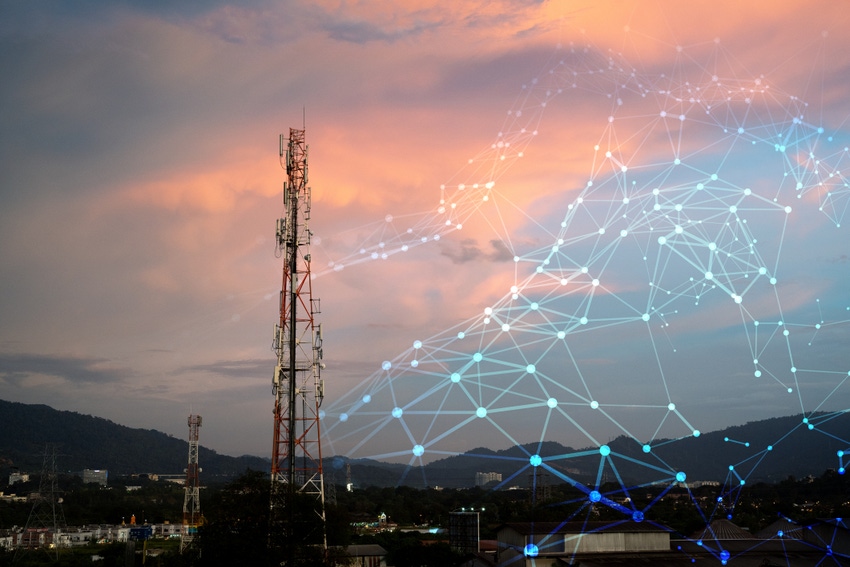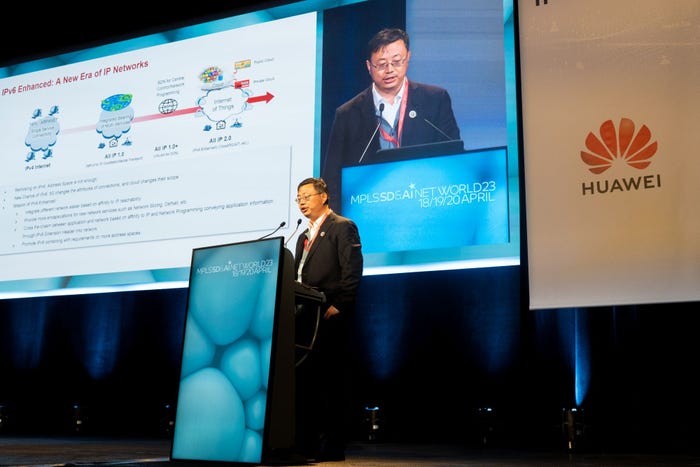April 20, 2023

Sponsored Content
At the keynotes session during the 2023 MPLS SD & AI Net Network World Congress, Mr. Li Zhenbin — Huawei’s chief IP protocol expert — delivered a keynote speech titled “IPv6 Enhanced: A New Era of IP Networks”, in which he systematically elaborated on the development of IP networks. New applications continue to emerge in each phase to drive constant IP network transformation. With the emergence of new applications such as 5G, cloud, and IoT, IPv6 Enhanced becomes the best choice to unleash network potential and give rise to a new era of intelligent IP networks.

Mr. Li first reviewed the development of IP networks and pointed out that the fundamental driving force of IP technology development is the continuous transformation of IP networks, which itself is driven by service application changes. The IPv4 era saw IP networks providing only basic Internet services, and the IP/MPLS era saw telecom carriers providing converged transport services. And now, with the emergence of new applications such as 5G, cloud, and IoT, data communication networks are ushering in a new era of IP intelligent networks.
There are many changes in this new era. Mr. Li noted that 5G changes the attributes of network connectivity whereas cloud changes the scope of network connectivity. First, best-effort IP connections cannot meet 5G QoS requirements, such as deterministic latency. Second, the development of cloud services and NFV requires that connections be flexibly established between physical devices, between devices on the cloud, and between devices on and off the cloud, bringing about changes in network connection and application scope. Traditional IP/MPLS technologies can hardly cope with such connectivity attribute and scope changes. IPv6 Enhanced, in comparison, fully meets the requirements of new applications and therefore becomes an inevitable choice for network evolution.
IPv6 Enhanced has three missions. First, its affinity with IP reachability makes traversing different network domains easy, thereby preventing MPLS network isolation. Second, 5G changes connectivity attributes and requires encapsulation of more types of information. Thanks to its extension header mechanism, IPv6 can encapsulate more information to meet the requirements of new services. And third, IPv6 Enhanced is an ideal medium for integrating applications with networks in order to unlock network value.
Mr. Li explained the advantages, commercial deployment progress, and value of key technologies such as SRv6, network slicing, IFIT, and APN6 in the IPv6 Enhanced technology family. First, IPv6/SRv6 extension headers have future-oriented network programmability, which can better meet the development requirements of emerging services. SRv6 has a unified E2E forwarding architecture that not only simplifies service deployment and supports incremental deployment, but also reduces the number of protocols. The SRv6 ecosystem and standards are already mature, multi-vendor interoperability is ready, and SRv6 header compression standards have been unified and verified on carrier networks. To date, more than 160 SRv6 networks have been deployed worldwide. Second, encapsulating network slice information into IPv6 headers helps isolate network resources. Currently, slicing has been deployed across networks around the world. For example, a carrier uses slices carried over one network to deliver differentiated network SLAs and provide private network services for healthcare and education customers, thereby enhancing market competitiveness. Third, IFIT in-band flow measurement can accurately reflect service link quality, enabling service SLA visualization, real-time awareness, and fast fault locating. And fourth, APN6 networks help carriers open up new space for network development.
In wrapping up his speech, Mr. Li noted that IPv6 Enhanced is an inevitable choice for the evolution of intelligent IP networks and called on the audience to actively embrace IPv6 Enhanced technologies to accelerate the pace toward the new era of intelligent IP networks.
About the Author(s)
You May Also Like








.png?width=300&auto=webp&quality=80&disable=upscale)


_1.jpg?width=300&auto=webp&quality=80&disable=upscale)


.png?width=800&auto=webp&quality=80&disable=upscale)